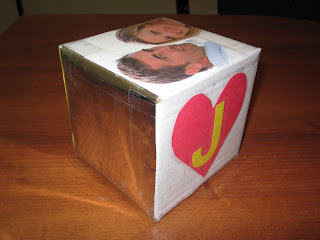 You can encourage healthy brain development by helping your child explore their five senses.
You can encourage healthy brain development by helping your child explore their five senses. A baby's brain is a work in progress. The outside world shapes development through experiences that a child's senses —
vision, hearing, smell, touch and taste — absorb. Repeated experiences taken in by the five senses help build permanent, strong connections in the brain.

Early on, as the pathways in a child's brain are strengthened through repeated experiences, permanent connections are formed that structure the way a child learns. If a pathway is not used, it's eliminated based on the "use it or lose it" principle. Things you do a single time, either good or bad, are somewhat less likely to have an effect on brain development.
Try some of the suggested activities below many times to help your child build strong pathways and connections in their brain.
 Hearing
HearingYour child uses their ears to take in information about the world around them. Developing the ability to listen carefully helps him or her get important information from you, caregivers, teachers, and coaches. Like other skills, learning to listen takes practice. Try the activities below to build strong brain connections.
Listening Games
Play a board game or card game with your child to see how good he is at listening. Listening is an important skill when you are playing games. Another effective activity would be to hide a ticking timer in a room and see if your child can find it.
Patterning
Use your hands and make clapping patterns together. Lead the clap sequence and encourage your child to repeat it. Once you have each had a turn leading the clap sequences try doing the same thing using the bells.
Is it harder to repeat the bell sequence?
Do you like to listen to the bells?
Which sound is louder?Example of a clapping sequence: Clap-slow, slow, fast, fast.
 Touch
TouchWe mostly feel through our hands and feet. Did you know that feet have thousands of nerves that go right to the brain? Let your child feel with their feet; it is just as important as their hands. Your child learns about their environment through touch. They learn about their body and how to communicate with others. Participating in these types of activities improves their fine motor skills. These skills will help your child hold a pencil, tie their shoes, button their clothing and use scissors.
Painting With Your Feet
Roll up your child’s pant legs, and have them step in a pan with paint, to experience the feeling of paint between their toes. Ask your child how it feels.
Is it smooth or rough?
Is it cold or warm?
Is it sticky or soft?Textured Dominoes
Everyone enjoys playing with dominoes. Encourage your child to use their fingers to feel the blocks and match them according to how they feel.
 Taste
TasteYour child will develop their taste preferences based on what they are fed early in life. It isn’t genetic– it's learned. Research concludes that teenagers and adults choose foods and beverages based on what they were fed as infants.
Fruit Salad
Make a fruit salad. Ask: Do you see different kinds of fruit in the bowl? Pick out different types of fruit and allow your child to take a bite of each one.
What do they taste like?
Have you had that fruit before?
Does it taste good?Taste Buds
There are 4 main taste buds located on our tongues—sour, bitter, salty, sweet. Allow your child to try different kinds of food to see what tastes they prefer. Ask them:
What does it taste like? (sour, bitter, salty, or sweet) Sight
SightYour newborn's eyes are physically capable of seeing at birth, but his brain isn't ready to process visual information, so things stay fuzzy for a while. Through their experiences, they will begin to connect meaning to the visual cues found in their environment. When your child plays games that involve sight they are developing early literacy skills. Sight games help them recognize objects, words, patterns, and consequences, as well as develop their memory.
Matching Games
Play a matching game with your child. They are using their eyes to play these games and improving their visual discrimination skills.
“I Spy” Book
Play a fun game of “I Spy” using an “I Spy” book. Talk about the different things you see on the different pages. You can also play this game using objects in your environment.
 Smell
SmellAfter birth, the sense of smell is one of the first things that bonds your child to you. Over time, certain scents become comforting because they are familiar, and this may be why your child may prefer that their security objects remain unwashed. They are attached to the scent of their blanket or bear.
Blindfolded Smell Test
Find some familiar scents like coffee, extracts used for baking, etc. Blindfold your child and place the scent under their nose.
What do they smell?
Do they know the smell?















